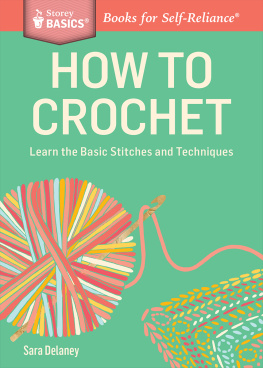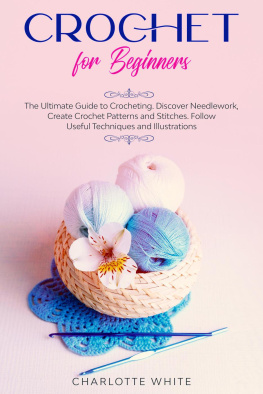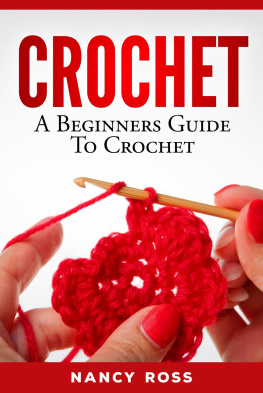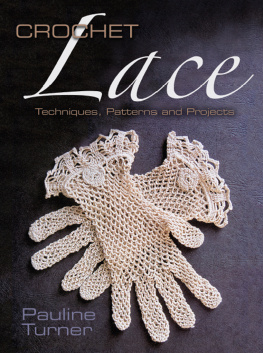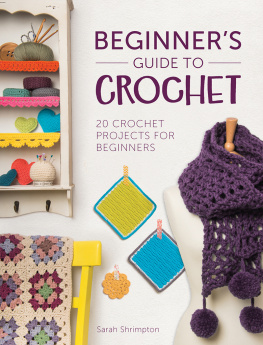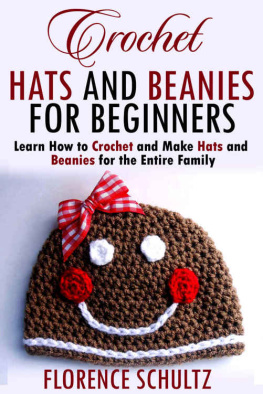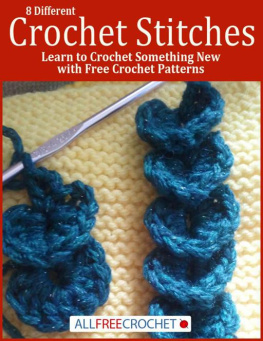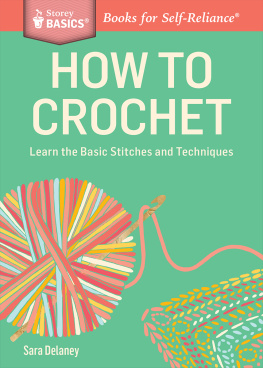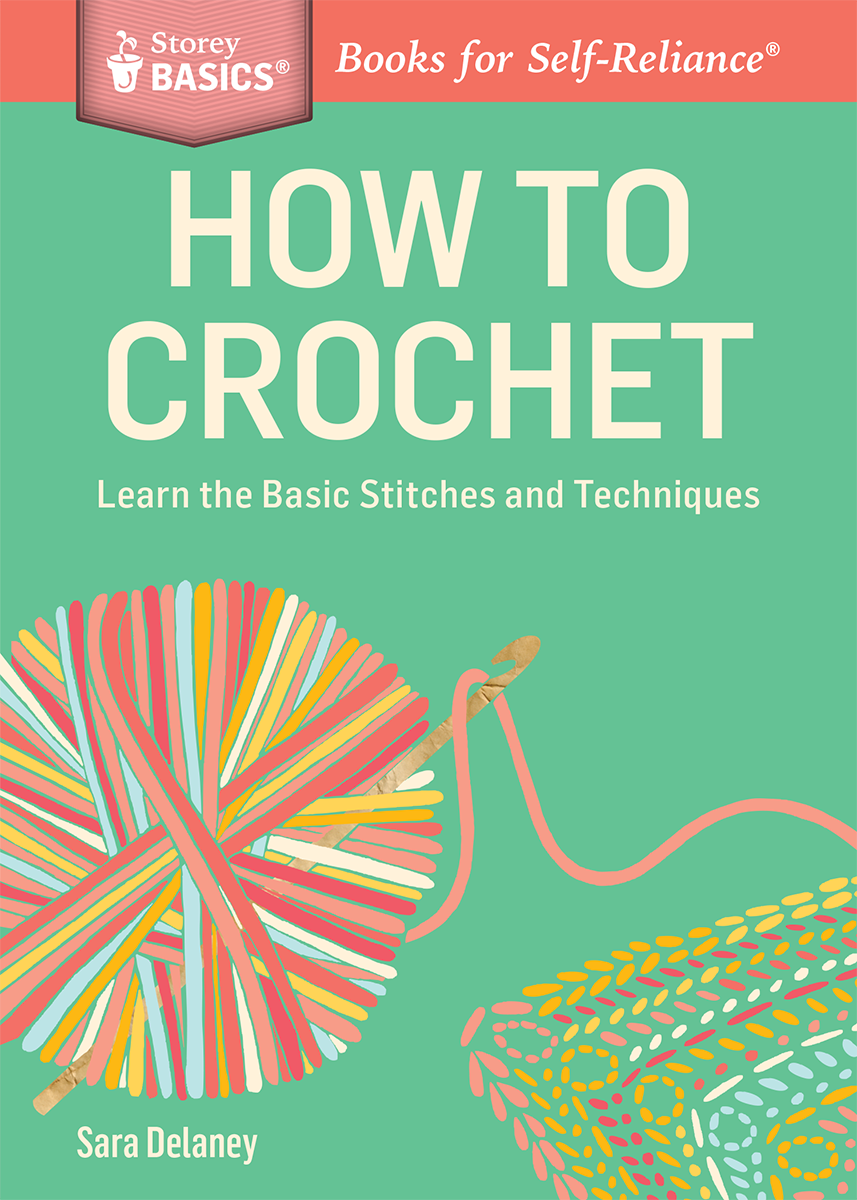Other Storey Titles You Will Enjoy
How to Crochet
Sara Delaney
Beginner-oriented instructions will lead you from simple single and double crochet stitches to changing colors, joining, and working with different shapes. A Storey Basics title.
128 pages. Available in ebook and paperback.
READ MORE AT STOREY.COM
How to Knit
Leslie Ann Bestor
Clear how-to drawings and beginner-friendly directions give new knitters the skills and confidence they need to succeed. A Storey Basics title.
112 pages. Available in ebook and paperback.
READ MORE AT STOREY.COM
How to Make a Quilt
Barbara Weiland Talbert
With basic sewing skills and these step-by-step instructions, any sewist can learn how to make his or her own first patchwork quilt. A Storey Basics title.
128 pages. Available in ebook and paperback.
READ MORE AT STOREY.COM
These and other books from Storey Publishing are available wherever quality books are sold or by calling 1-800-441-5700.
Visit us at www.storey.com or sign up for our newsletter at www.storey.com/signup .
Contents
For Livia Gladu, without you there would be no pages to this book. Thank you for my first hook, the miles of chains, and everything else.
Introduction
Getting Started in Crochet
My Memaire taught me to crochet when I was a child because I bugged her. I dont know that I was all that interested in making things at the time; I just wanted to do what she was doing.
And how hard could it be really? She waggled that little hook up and down, wrapped some yarn around it, and poked it into some loops of yarn shed already made. Surprisingly, I found that it really was, almost, as easy as I thought. There is hook waggling and lots of loops, but in the end the majority of crochet is wrapping yarn around your hook, pulling your hook through loops, and making a choice. You choose with crochet. What stitch do I use and, mostly, where do I put that stitch?
This book will teach you how to read your stitches, how to see them and understand what youre seeing so that you can make the best choice about where to place your next stitch. I also hope youll learn to love crochet as I do.
Be Prepared
The first choices you make when you begin any crochet project involve getting prepared, so its important to assemble all the tools and materials you will need. The success of your project hinges on understanding the materials youre using, as well as knowing their best uses. To avoid the common frustration points in crochet, you need to understand not just how to make your stitches but how the way you use your tools and materials can influence the stitches, as well as the reason you make the stitches in a particular manner and where you place each stitch.
Setting up for a project can seem dry and boring when youre just really excited about getting started, but taking the time to prepare and familiarize yourself with these beginning steps can make all the difference in fending off midproject frustrations, understanding mysteries of gauge and fabric, and preventing the little roadblocks that discourage many newcomers and cause them to give up.
This book will not only teach you the basics of each crochet stitch and how to read your crochet fabric, but it also contains some basic pattern formulas that you can use to make a wide range of beginner projects.
Before You Begin...
Patterns are like recipes, so view each one as you would a recipe. Make sure that you have all the materials (the ingredients) on hand before starting, and familiarize yourself with all the stitches (the techniques) needed to successfully complete the project (the dish).
Like any other skill, crochet is something that you build with practice. If this is the first time youve ever picked up a hook and yarn, you will need to dedicate some time and perseverance to learning this new skill. Each time you sit down with your hook and yarn, you will get better, not all at once, but little by little. Be patient with yourself. No one has a natural talent for crochet: They are either just practicing more than you or have been at it longer. And each person has a distinct learning style. Some can read a passage once, understand its full content, and reproduce it easily, while others need repetition, and still others need a visual guide. Ill try to address as many different kinds of learners as I can in this volume to get you started on the crochet path with minimal resistance.
Chapter 1
Getting to Know Your Materials
Every person has a basic set of tools needed to complete their job: Batman has his utility belt and cape, the plumber has a monkey wrench and pipe snake. Crocheters have a set of tools too, and knowing how to choose the right tools will make every project that much easier.
The One Essential: A Hook
The first and most important tool to get familiar with is the hook. While it may seem to be one of the simplest tools there is, it can be quite complex. Hooks are available in lots of different materials, and each has a different feel and interacts differently with different yarns. Youll want to experiment to find which materials you like using.
Common Hook Materials
- Metal. Most metal hooks are slick and smooth. In fact, they can be quite slippery, allowing the yarn to move very easily over the surface. This type of hook works well with all kinds of yarn.
- Wood. Whether made from maple, bamboo, or laminated layers, wooden hooks have a textured surface that gives them a bit more grip on the yarn. If youre working with a slippery yarn, this kind of hook can help you hold on to the yarn and slow down the stitches.
- Plastic. These hooks are fairly smooth but can have a bit of grip. Depending on what fibers you are crocheting with, you may or may not need the grip.
Parts of the Hook
Whether you are using a tiny steel hook for fine Irish lace or a superlarge hollow plastic hook for rag rugs, the basic parts of the hook are the same. Understanding the anatomy of your hook will help you to better understand the construction of your stitches and help to avoid some pitfalls of gauge and construction. Each manufacturer offers its own combination of the elements described below, and no two companies are alike; many companies even produce more than one style to appeal to a broader audience. No one hook works for every crocheter, and you may need to experiment with several styles before you find the one that is right for you.
- Point (also sometimes called tip or head) (A). This is exactly what it sounds like. It is the leading edge of your hook, and its what will guide you into your next stitch. There is no standard style for this part of the hook. You will find that some manufacturers make hooks with very sharp points and others with fairly blunt, rounded points, as well as everything in between.
- Throat (B). This is the tapered portion forming the actual hook that allows for grabbing and pulling the yarn. There are two distinct styles for this section of the hook:

